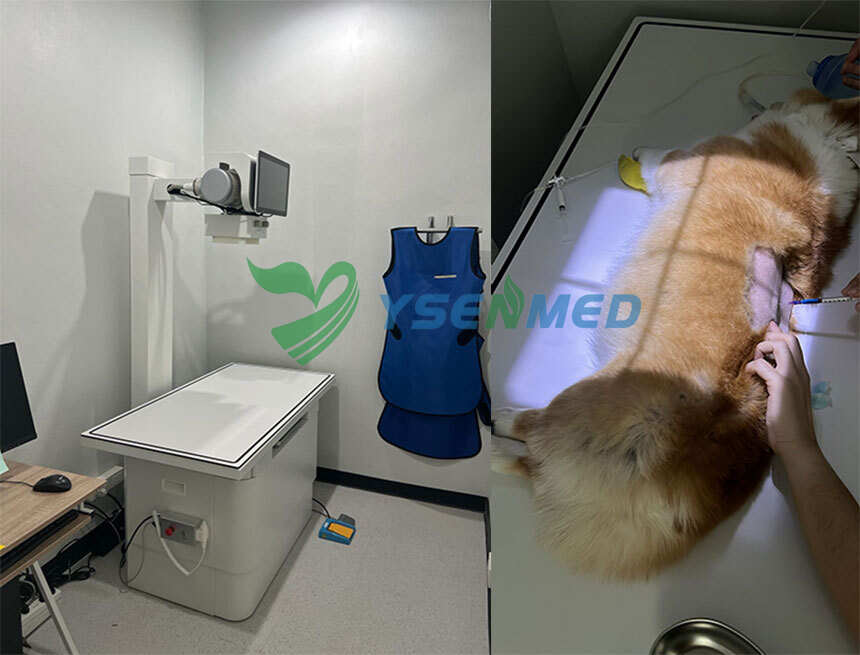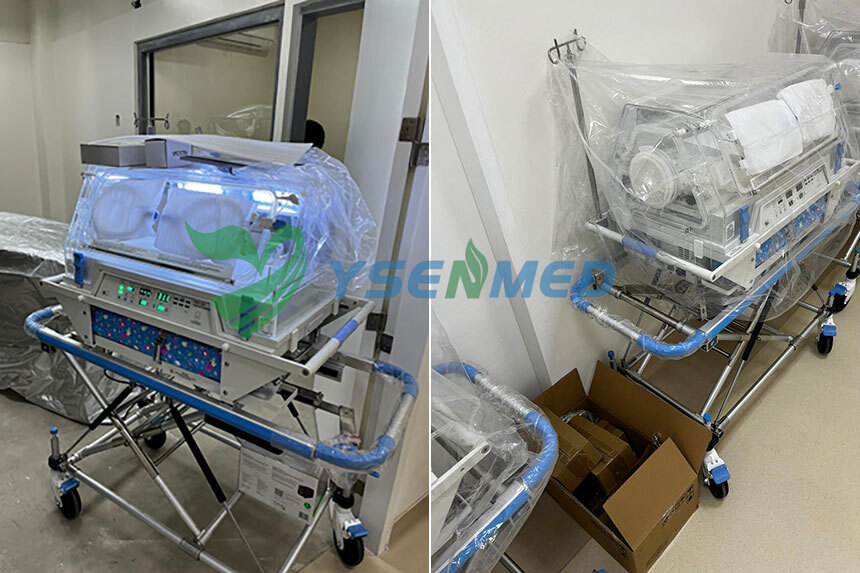Title: Maximizing Efficiency and Accuracy: Unveiling the Dual Benefits of Medical Digital X-ray Machines
Introduction:
In the realm of modern medicine, the advent of
medical digital X-ray machines has revolutionized diagnostic imaging practices, offering a dual promise of efficiency and accuracy. These advanced devices have streamlined workflow processes, minimized examination time, and enhanced diagnostic precision, thereby elevating the standard of patient care. In this comprehensive guide, we explore the myriad benefits of medical digital X-ray machines and their profound impact on healthcare delivery.
Evolution of Diagnostic Imaging:
Historical Overview: Brief exploration of traditional X-ray imaging techniques and their limitations.
Emergence of Digital X-ray Technology: Introduction of digital X-ray machines and their transformative effects on diagnostic imaging practices.
Transition to Medical Digital X-ray Machines: Evolution from conventional radiography to digital X-ray machines, emphasizing the shift towards enhanced efficiency and accuracy.
Understanding Medical Digital X-ray Machines:
What Are They?: Definition and basic principles behind medical digital X-ray machines.
How Do They Work?: Explanation of the imaging process, including image acquisition, processing, and interpretation.
Types of Machines: Overview of different types of medical digital X-ray machines available in the market and their specific applications.
Efficiency in Diagnostic Imaging:
Streamlined Workflow: Automation of image acquisition and processing reduces examination time and enhances workflow efficiency.
Rapid Image Retrieval: Digital storage and retrieval systems enable instant access to patient images, facilitating timely diagnosis and treatment.
Remote Accessibility: Cloud-based solutions allow healthcare professionals to view and interpret X-ray images from any location, optimizing resource utilization and collaboration.
Accuracy in Diagnosis:
High Image Quality: High-resolution images with improved clarity and contrast enhance diagnostic accuracy and visualization of anatomical structures.
Digital Enhancement Tools: Image processing algorithms and enhancement filters aid in detecting subtle abnormalities and optimizing diagnostic interpretation.
Comparative Analysis: Digital image overlays and side-by-side comparisons enable clinicians to track disease progression and treatment outcomes with precision.
Impact on Patient Care:
Timely Diagnosis and Treatment: Expedited imaging processes and accurate diagnosis lead to timely initiation of treatment protocols, improving patient outcomes.
Reduced Radiation Exposure: Advanced dose modulation techniques minimize radiation dose without compromising image quality, ensuring patient safety.
Enhanced Patient Experience: Shorter examination times and reduced waiting periods enhance patient satisfaction and comfort during diagnostic procedures.
Integration with Healthcare Systems:
Compatibility with PACS: Seamless integration with Picture Archiving and Communication Systems (PACS) facilitates centralized storage, retrieval, and sharing of digital images.
Interoperability with EHR: Integration with Electronic Health Records (EHR) enhances accessibility to patient information and facilitates comprehensive care coordination.
Telemedicine Applications: Remote consultation capabilities enable virtual collaboration between healthcare providers, improving access to specialized expertise and reducing geographical barriers.
Case Studies and Success Stories:
Real-world examples showcasing the practical applications and success stories of medical digital X-ray machines in diverse healthcare settings.
Case studies highlighting the impact of these machines on diagnostic accuracy, workflow efficiency, and patient outcomes.
Training and Education:
Importance of comprehensive training programs for healthcare professionals to effectively utilize medical digital X-ray machines.
Integration of digital imaging technologies into medical education curricula to familiarize students with advanced diagnostic techniques and interpretation methods.
Regulatory Compliance and Safety:
Adherence to regulatory standards and guidelines governing the use of medical digital X-ray machines to ensure patient safety and data security.
Implementation of quality assurance protocols and radiation safety measures to minimize risks associated with X-ray exposure and ensure compliance with regulatory requirements.
Continuous Improvement and Innovation:
Emphasis on ongoing quality improvement initiatives and technological advancements aimed at enhancing the performance and capabilities of medical digital X-ray machines.
Collaboration between manufacturers, healthcare providers, and regulatory agencies to drive innovation, address emerging challenges, and improve patient care outcomes.
Conclusion:
As the cornerstone of modern diagnostic imaging, medical digital X-ray machines epitomize the synergy between efficiency and accuracy in healthcare delivery. By streamlining workflow processes, enhancing diagnostic precision, and optimizing patient care outcomes, these advanced devices have redefined the standards of medical practice. As we continue to harness the potential of digital imaging technology and embrace innovation, the future holds immense promise for further advancements in diagnostic accuracy, workflow efficiency, and patient-centered care.
Addressing Challenges and Limitations:
Identification and mitigation of challenges associated with the adoption and integration of medical digital X-ray machines in healthcare settings.
Strategies for addressing technical issues, workflow disruptions, and user training gaps to optimize the utilization of these devices.
Environmental Impact and Sustainability:
Evaluation of the environmental footprint associated with the production, usage, and disposal of medical digital X-ray machines.
Implementation of sustainable practices, such as energy-efficient design, materials recycling, and responsible disposal, to minimize environmental impact and promote sustainability.
Patient Privacy and Data Security:
Importance of safeguarding patient information and ensuring compliance with data privacy regulations in the context of digital imaging technologies.
Implementation of robust cybersecurity measures, encryption protocols, and access controls to protect sensitive medical data transmitted via digital networks.
Patient-Centered Design and User Experience:
Integration of human factors engineering principles and user-centered design approaches to optimize the usability and ergonomics of medical digital X-ray machines.
Collaboration with healthcare professionals, patients, and design experts to refine device interfaces, controls, and accessories for enhanced user experience and patient comfort.
Telehealth and Remote Monitoring Applications:
Expanding the scope of medical digital X-ray machines to support telehealth consultations, remote monitoring, and virtual care delivery.
Leveraging digital connectivity and imaging capabilities to facilitate real-time collaboration between healthcare providers and patients, particularly in remote or underserved areas.
Economic and Societal Impact:
Assessment of the economic implications and societal benefits associated with the widespread adoption of medical digital X-ray machines in healthcare.
Analysis of cost-effectiveness studies, reimbursement models, and healthcare resource allocation strategies to optimize the value proposition of these devices and maximize their societal impact.
Conclusion:
In conclusion, medical digital X-ray machines represent a cornerstone of modern diagnostic imaging, offering a harmonious blend of efficiency, accuracy, and patient-centered care. By streamlining workflow processes, enhancing diagnostic precision, and optimizing patient outcomes, these advanced devices have redefined the landscape of healthcare delivery. As we navigate the challenges and opportunities presented by digital imaging technology, it is imperative to prioritize patient safety, data security, and sustainability while embracing innovation and continuous improvement. By harnessing the transformative potential of
medical digital X-ray machines, healthcare providers can advance the quality, accessibility, and effectiveness of diagnostic imaging services, ultimately improving the health and well-being of patients worldwide.




